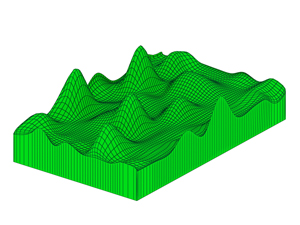 One of the principal activities at RTP is applying atmospheric
dispersion models for permitting, EIS development, facility
design, health risk assessments and other special
purposes. RTP’s experience and knowledge allows us to provide the
best possible modeling scenarios for individual project
needs. We define the operational flexibility essential to
your business and then work closely with your project team to
achieve regulatory compliance thresholds. RTP provides
services that address project needs including the initial
discussions of project specifics, agency approvals of modeling
protocols and databases, defending the results and obtaining final
project approvals. One of the principal activities at RTP is applying atmospheric
dispersion models for permitting, EIS development, facility
design, health risk assessments and other special
purposes. RTP’s experience and knowledge allows us to provide the
best possible modeling scenarios for individual project
needs. We define the operational flexibility essential to
your business and then work closely with your project team to
achieve regulatory compliance thresholds. RTP provides
services that address project needs including the initial
discussions of project specifics, agency approvals of modeling
protocols and databases, defending the results and obtaining final
project approvals.
Our staff have been and continues to
be intimately involved in the development and improvement of air
quality models including the Beta testing of models. RTP staff have also developed air quality models for
specific applications to resolve difficulties with contemporary
EPA approved models. RTP is
knowledgeable and adept at performing analyses that are
accurate, cost effective and meet project
schedules. RTP can provide full contract services in
these areas or be included as a specialty air modeling service
within a major project team.
RTP regularly performs
a variety of standard regulatory modeling and special study
dispersion analyses. We maintain an extensive library of
computer models and associated data bases and have participated
in the development and evaluation of the latest models including
ISCPrime, AERMOD, and CALPUFF. In addition to the
standard EPA dispersion models, RTP maintains special
purpose models to comply with various State and user
requirements. We have developed programs to derive
site-specific receptor grids of varying densities directly from
USGS DEM data files, as well as programs and digitizing
techniques for developing terrain profiles for CTDMPLUS and CTDM Screen. Our internal and external
state-of-the-art computer resources allow
for cost effective and timely completion of each project. We
can even host modeling applications at a web site to meet your
specific needs.
Modeling protocols are critical and must assure the
applicants’ operational requirements are fully incorporated
to avoid delays in project approvals.
Modeling protocols and analyses prepared by RTP staff have
involved a variety of locations in rural and urban environments,
ranging from simple single-point analyses to complex
multi-source industrial applications, from simple flat terrain
analyses to complex and urban topography. Modeling has
also been performed for various time and spatial scales from
short-term analyses to multi-year assessments over varying distances to meet project
requirements.
Diverse source treatments have been developed, including
continuous and intermittent sources, surface fugitive area and
line source releases, volume release sources, and accidental
release scenarios.
|